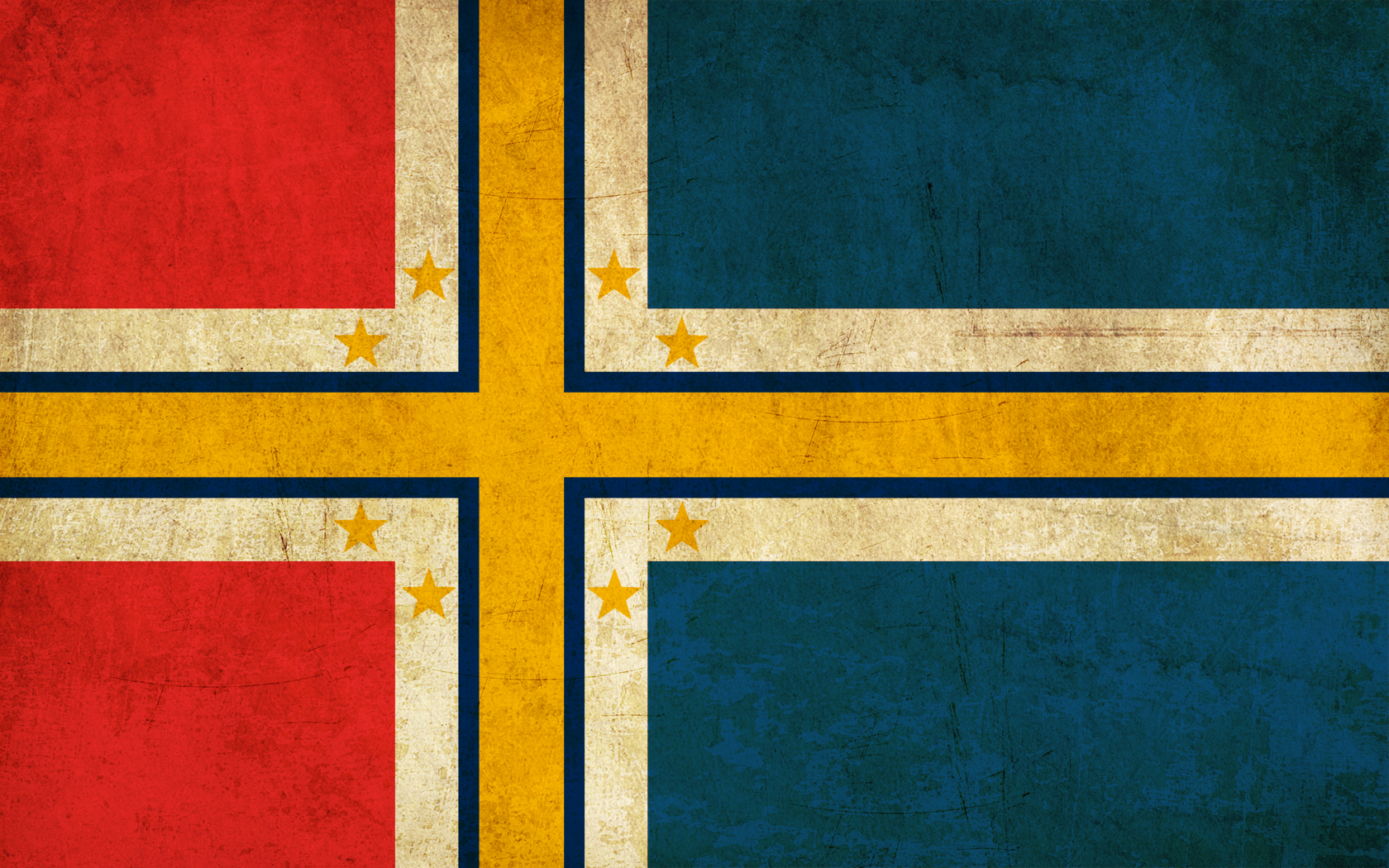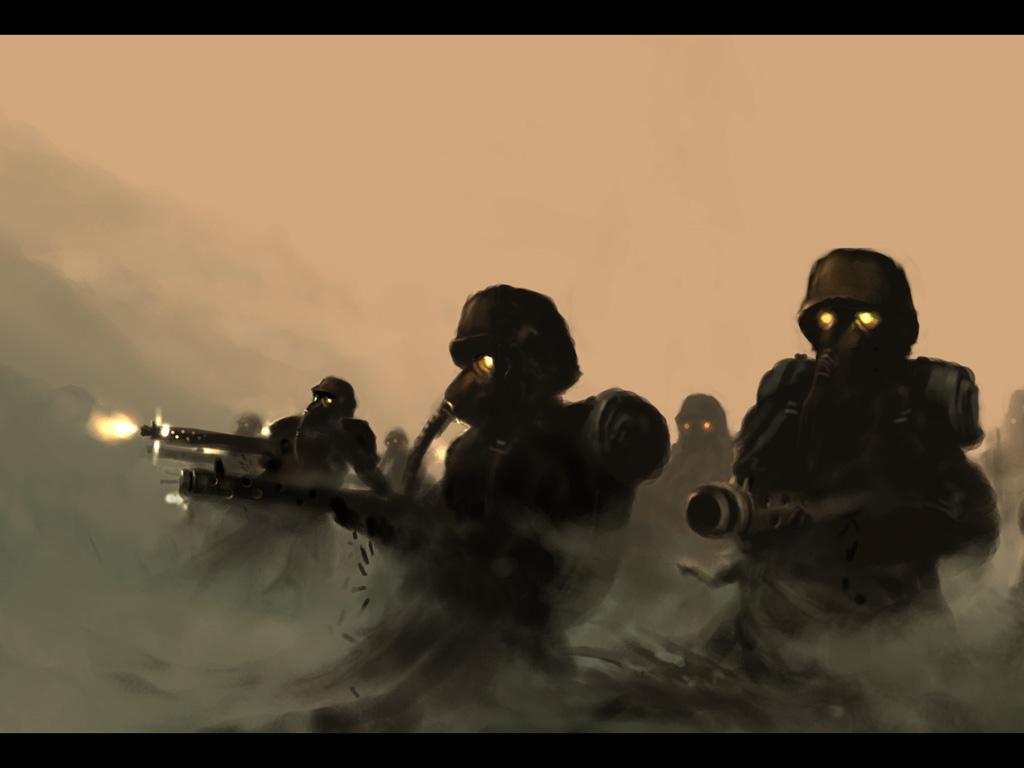A Traveler's Guide to the United Commonwealth of Scandinavia
PART ONE
Flag of the United Commonwealth
Culture and History
It is largely inevitable that you are aware of the existence of the United Commonwealth of Scandinavia, up until recently known as the Nordic Imperium, and it is almost inevitable that you have some kind of opinion about the nation, its leaders, and the people who inhabit it. Firstly, allow me to disavow you of the mindset that the Scandinavians are all killing machines, marching in lockstep with their Emperor and vaguely fascist, authoritarian political elite. Secondly, allow me to enlighten you to the fact that Scandinavia is indeed a fascist state, by any definition that we would recognize such an entity. The people of Scandinavia, or at least, the Norse Imperium have always been attached to the idea of authoritarianism on a national level; it is heavily bred into every Scandinavian at an early age that the decadence, the self-serving quality, and ultimate willful ignorance and sloth of the pre-Plague world is what lead to its destruction. Therefore, it is also heavily beaten that it is the responsible of every upright citizen to resist the call of decadence, and uphold what the Scandinavians call the national dialectic. In other words, the heart and soul of the nation, its beliefs, values and ideology. Additionally, the Scandinavians believe with much conviction that the only healthy state for a nation to be in is war; it is believed that all nations are effectively in a constrained state of war against each other, and it is the responsibility of all nations to ensure the best interests of their citizenry by whatever means possible. Ergo, the military and armament programs by the Scandinavian government that so many nations decry as unethical and barbaric. The Scandinavians would return that it is unethical, barbaric, and hedonistic to disavow warfare out of the selfish desire for peace by any means necessary. In other words, the people of Scandinavia (those who we hear from, that is) believe that pacifism is an ideology of sloth that fears war out of self-serving cowardice, rather than aspires towards peace for the greater good. In the eyes of the Emperor, war has always had and will always have a purpose: the advancement of the national dialectic. Despite all this talk of politics and perception, we should attempt to establish some grounded facts about Scandinavia. In doing so, we will see the substance the perception and politics of the nation has. Below are some statistics as listed by the Imperial Bureau of Tourism:
- United Commonwealth of Scandinavia
- Government: Constitutional Monarchy
- Population: Approx. 20 million
- National Language: Nordic
- Colonial Possessions
- -Scandinavian Congo (Approx. 4 million)
- -Scandinavian Malagasy (Approx. 3 million)
Very quickly, we can see that some of these facts are not without dispute. Though it is not necessarily a fair opinion, if you asked a German what language people in the Imperial District of Norway spoke, he would say Norwegian. But the National Rikstag, and the Emperor, disagree. In fairness, "Nordic" is probably a legitimate language insofar as prior to the Plague, the languages spoken in Scandinavia (save for Finnish) almost all derived from Danish which ultimately was broken from German. Give or take the years after the Plague, and we see further linguistic uniformity as regional dialects and accents disappear. The resulting parlance is termed "Nordic". Why not Scandinavian? Our United Commonwealth of Scandinavia derives its political authority from the former Norse Imperium, the union between the states that emerged in the pre-Plague nations of Denmark and Norway, that was based around adherence to the "Norse Church" and a general idea of Scandinavian unity as the "Nordic peoples". Simply put, early post-Plague Scandinavians preferred to evoke the image of the Vikings and the Nords than their more recent, pacifistic and isolationist Swedish, Danish and Norwegian forebears.
Without entering an essay on the geopolitics and political ideology of the nation, we can speak briefly to its recent history. The "War of Norse Aggression" is regarded, probably rightly, in Scandinavia as a significant national victory. The dream of Scandinavian unity was quickly and finally achieved under the auspices of what the Scandinavians call the "Great Patriotic War of Scandinavian Unification", without a single shot having to be fired in aggression by the Imperial Army. More aptly, Germany's entrance to the war against Scandinavia allowed the powerful Scandinavian "Nordist" political and intellectual elite to turn the war of aggression and national unification enacted by the Norse Imperium into a defensive war in the name of Scandinavian solidarity. The struggle of the war, with such iconic events as the Battle of Aarhus and the destruction of the Jutland Peninsula, has in the ultimate victory allowed for a flowering of Nordist art and politics.
"The Final Stand at Aarhus" by Nordist artist and intellectual, Erik Hurst
While on a national level, the people of Scandinavia are probably prepared to go to war at a minute's notice in the name of Nordic glory and the national dialectic, on an actual individual level the Scandinavian is essentially no different than any other person. Many Scandinavians are just as skeptical of their government's propaganda as any foreigner, though by and large they do tend to agree with the sentiments expressed by such political figures as Emperor Henric or the leaders of the Imperial Nordist Party. Every morning at eight, Scandinavians of every stripe can be seen riding the metro, taking the bus, or driving to work in offices that are little different than those in Franco-Germany, Japan, or the American Confederacy. In recent times, since the end of the war, Scandinavian politicians have done much to attempt to reinvent the image of Scandinavia at home and abroad. The victory in the war, and the formation of the Iron Compact, has essentially irrefutably established the United Commonwealth as a global power. To what extent that power is global is yet to be proved, but politically and culturally, now that the former Norse Imperium has established unquestionably its superiority and primacy in Scandinavia and the Baltic, it is time to become concerned with the world. With "the entire world watching" as it were, Scandinavians have rushed to build the image if not the essence of a nation striving forward into a bright new future. A bright new future, much to the chagrin of global liberals, that is just as fascist as the "dark past" of the early post-Plague years.
Flag of the Imperial Nordist Party, "The Lion Standard"
The Star of the North, common image at Nordist rallies
Sites, Sights and Politics
With a total population estimated at some twenty million, a robust (if slowly demobilizing economy) and possession of basically the only sites of historical importance that are above the Arctic Circle, the United Commonwealth of Scandinavia is a nation that succeeds on its own merits in terms of tourism. However, that is not enough for the Imperial Bureau of Tourism who advises travelers to:
... If at all possible, all tourists should take the opportunity to, while in any major city, take the metro down to the city square where nearly every Friday they can attend free of charge an Imperial Nordist rally. Such events are a demonstration of the patriotism and love all Scandinavians bear their country, and provide a clear example to all foreign nationals of just what they're missing by not embracing the spirit of Nordism.
It is the opinion of this author that the very last thing you want to do while in the United Commonwealth of Scandinavia is attend these rallies. Foreign witnesses attest that they are often an excuse for the youth to become illegally drunk, nationalist ideologues to become vociferous if not violent, and general mayhem to ensue. Despite this, we are ensured that such activities as "Throw the Kraut Down the Well" and "Shoot the Apple off the Ugric Nationalist's Head" are fun for the whole family by the Imperial Bureau of Tourism. Despite this, we concur with the "Tourist's Guide to Stockholm" when they advise the discerning, intellectual traveler to seek out a sermon at any of the Nordic churches in the city.
Ecclesiastical standard of the Norse Church
While arguably another arm of the Nordist intellectual complex, the Nordic Church is a far older, ultimately far calmer entity within the Commonwealth's complex political and ideological strata. Like the pre-Plague Catholic Church, except without all those dubious altar boys, the Nordic Church is the official religious denomination of the Imperial State. Its authority is largely ceremonial, even though the Emperor is technically Pontiff of Copenhagen, most of the actual religious authority is concentrated in the Archdiocese of Stockholm. Indeed, in recent years the Nordic Church has been something of a liberalizing influence in Nordic politics, much to the chagrin of the political elite, ergo the gradual separation of political and religious power in the Commonwealth. All that stands to change, however, with the elevation of a new Archdiocese in Stockholm and an internal reformation and reorganization of the Church.
Politically speaking, the United Commonwealth is fairly uniform. Its regional authorities, known as the Imperial Districts, are divided essentially along pre-Plague national boundaries, save for in Finland, where the Imperial State considers eastern Lappland and Finland's shore against the Gulf of Bothnia part of the Imperial District of Sweden. According to most foreign observers, this evinces the fundamental cultural and arguable racial oppression inherent in the Scandinavian government. Again, the Imperial State disagrees. Where foreigners see discord and inequality, Scandinavians (at least the ones who aren't Finnish) see a return to the natural order of things. Whether they will admit it or not, at the heart of many Nordist politicians' agendas is the essential return to the Scandinavian politics of the Kalmar Union: Danes, Swedes and Norwegians united in their desire to control everyone and everything else.
Despite this, the Nordists have done much to reclaim Finland's national figures as Scandinavian ones. Various statues of the famed pre-Plague general Mannerheim have survived the Plague years, and have been recently restored to their original condition by the Imperial District of Finland. Outfitted with new plaques, they read "Mannerheim, Hero of the Scandinavian People, Who Drove Back the Hated Russian".
Image of Russian citizen provided by the Imperial Bureau of Information






